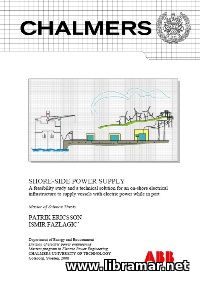 The publication presents a professional feasibility study of the proposed technical solutions for the on-shore electrical infrastructure to supply ships with the electrical power during their staying at ports. The vessels utilize their diesel engines in order to produce the electricity they require for the loading/discharging activities, hoteling and other needs while in ports.
Main shipboard engines are commonly switched off straight after the vessel gets berthed. Nowadays, the auxiliary engines installed on board run on the cheap low quality fuel, and their operation results in the negative impact on the environment. There are several marine ports applying the shore-side electrical power supply in the port infrastructure and the environment of those parts have significantly improved during past years.
The other ports have subsequently started investigation in this field analyzing the possibilities of arranging the shore-side supply. When preparing a technical design, the first thing to be investigated is the shipboard electrical system. The study contained in this report has shows how the electrical power needs vary depending on the type of ship, ranging from one to eleven megawatts. The ports shall be duly aware of the ship power needs, system voltage and frequency in order to properly design the supply facility...
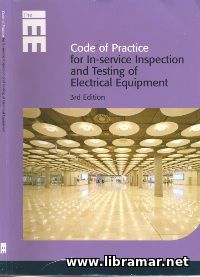 This is the third edition of the popular Code of Practice dealing with the established procedures and techniques for the routine inspection and periodical in-service testing of the electrical equipment. The main goal of the document is to provide valuable advice and instruction on the inspection and testing in order to determine if the electrical equipment can be considered fit for service or there is necessity for the maintenance/replacement.
This edition of the Code features clarification of the equipment covered in its pages, and additional explanations of the terminology involved. The authors have also covered some of the alternative methods of testing. Moreover, the publication provides some additional explanation on the test leads and RCD adaptors as well as on the extension leads. The text is supplemented with the newly introduced appendices containing numerous images illustrating normally encountered deficiencies.
Regularly conducted inspection of the electrical equipment and installations is considered a fundamental part of the preventive maintenance program. Records of the routine maintenance and test results shall be maintained throughout the whole working cycle of the equipment, this is required to enable the condition of the equipment, effectiveness of the periodical maintenance policy for the assessment, and to show that the maintenance system is in place and effective.
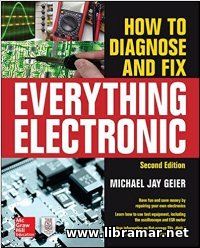 Have a look into this nice and fully revised guidebook which is a real must-have one for the people engaged in troubleshooting and repair of any electronic equipment. They will find here all technical information, instructions and practical tips required to perform the repair of any kind of the electrical equipment. The content of this second edition of the guide has been significantly reworked.
The volume is offering professional insights and real case studies together with the detailed step by step instructions from the recognized experts. The reader will discover how to assemble their workbench and use the very latest electronic test equipment, perform the replacement of the dead components and handle the reassembly activities. There are instructions related to the specific electronic devices.
You will get to know how to choose the correct tools and ensure personal safety, PPE, standing for the personal protective equipment, get the understanding of the electrical components and their working principles, how to conduct preliminary diagnoses on the basis of the symptoms, properly interpret electronic diagrams, analyze the circuits, assemble and disassemble equipment, locate faults etc.
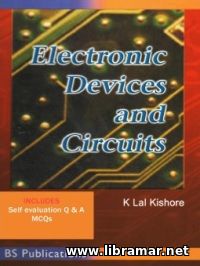 The present publication is one of the most popular and interesting volumes on electronic circuits and deices available today. The effectiveness of the book has already been well recognized and appreciated all around the world not only by the students of engineering but also by the practicing electrical engineers and specialists in electronics who have found it an excellent resource for refreshing their professional technical knowledge.
Written by the world known expert, Professor of Electronic and Communication Engineering Dr. K. Lal Kishore, the publication covers virtually all areas of electronic devices and circuits. The material of the volume is divided into eight separate chapters with the first chapter covering electron dynamics and cathode ray oscilloscope, or CRO for short, together with its practical application. It also derives the math equations that describe the motion.
The second chapter is dealing with the characteristics of the junction diode including conduction and conductivity, donor and acceptor type semiconductors, ionization energy etc. The other chapters of the publication cover such important topics as filters, regulators and rectifiers, transistor characteristics, stabilization and biasing, oscillators and amplifiers. Numerous appendices provide additional info on color codes used for various electronic components, inductors and capacitors, circuit symbols, etc.
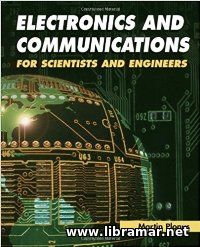 At the first glance, the audience for this volume may look same as the audience for the broad-based textbooks on electrical engineering; however, it shall be noted that the content of the present publication differs in its structure, length and, what is most important, in its emphasis.
The traditional books mainly cover electrical circuits together with the electronics and then proceed to the electrical machinery, but the author of this volume believes that it would be much more important for the students of today to get information about the digital technology, even more important than the traditional electrical machinery.
The book is aimed at those students who require to get better understanding of the modern electronics as well as of the communication. The emphasis has been made by the author on the practical application and on the fundamental principles. There are three main parts in the book, and they are dealing with the electrical circuits, electronics, and communications.
Since electronics is commonly treated as the combination of R, L, C elements and active elements, the author made a decision to begin his work with a study of electrical circuits. In short, this is one of the best books on electronics and communications available on the market and it is highly recommended to the students and specialists.
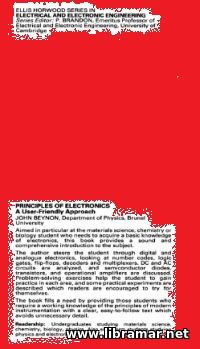 This publication is mainly aimed to provide required guidance on the basic principles of electronics to the students in the field of material science and other fields requiring some knowledge of the electronics. The material provided in the pages of this brilliant volume will let them get better understanding of the subject. The author of the book leads the readers through the whole analogue and digital electronics covering all important aspects.
There are numerous problem solving practical exercises included in the book to help students gain more practice in each of the areas covered; there are also several practical experiments described by the author to encourage students to make their own try. The book will fill practical demand of the interested people including students and specialists in different fields.
The volume opens with the general introduction chapter covering basic definitions, inductors and capacitors, electrical energy and power, energy sources and other aspects. It is followed by the chapters devoted to the digital electronics and analysis of the direct current circuits. The remaining chapters of the book address operational amplifiers, field-effect transistors, bipolar transistors and their circuits, AC theory and semiconductor P-N junction diodes.
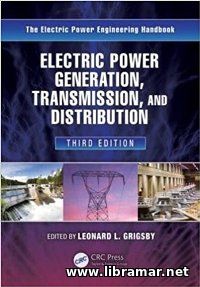 One of the most popular books on electrical engineering. The content of the volume features valuable contributions from the recognized leaders in this field and was carefully crafted by the authors. This third edition of the publication has been significantly updated in order to provide readers with the convenient access to the detailed technical information on may power engineering aspects.
Nearly every part of the book was amended to reflect the very latest developments in modern electrical systems, duly reflecting all recognized international standards and industry practices. Among the topics covered there are generation of the electrical power using both conventional and non-conventional methods, power transmission and distribution systems, utilization of the electric power and its quality.
The newly introduced chapters cover such important matters as linear electric motors and reliability of the transmission lines, high-temperature conduction, HV DC transmission system and others. A must-have publication for every person engaged in electrical engineering, generation and transmission of the electric power and any relevant disciplines and activities.
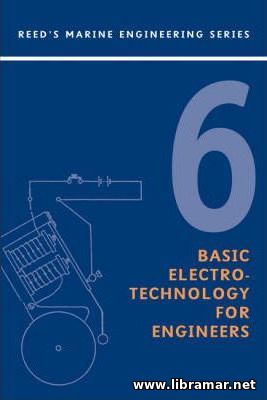 The present book is mainly intended to provide a comprehensive coverage of the essential theoretical work on electrotechnology to be used by the students as well as practicing engineers. The authors of the book have concentrated on the basic theoretical principles and refer to the numerous informative illustrations. There are many works examples included to supplement the theoretical part of the volume.
There are also several examination questions included at the closing part of the book to check the progress of the students; it means that this book could be used for self-study as well. The main content of the publication has been arranged in fifteen chapters followed by the solutions to all examples provided inside. Note that the first- and second-class examination questions are also there and supplemented with the correct answers.
The book will start with the basic electrical terms and information on circuits, conductors and insulators, electrochemistry topics, magnetism and electromagnetic induction, AC and Dc motors, electronics and so many other topics that are of the utmost importance to the electrician working in any field and particularly for the ship crew members.
« 1 2 3 4 5 6 ... 15 16 » |







